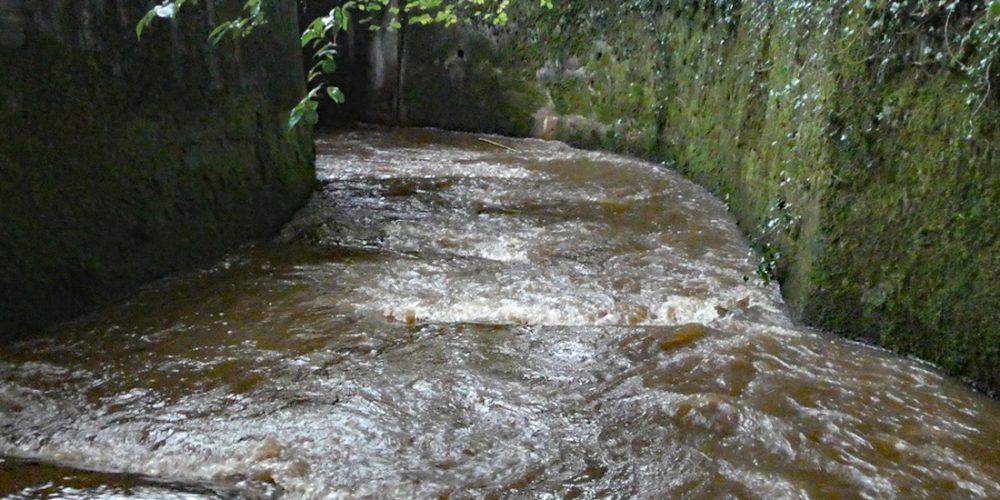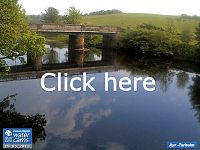The newly installed Bogend Burn fish passes at Catrine had their first real flow of water down them this morning and ART staff attended to measure the rate of flow and compare that to the flows they recorded prior to installing the baffles.
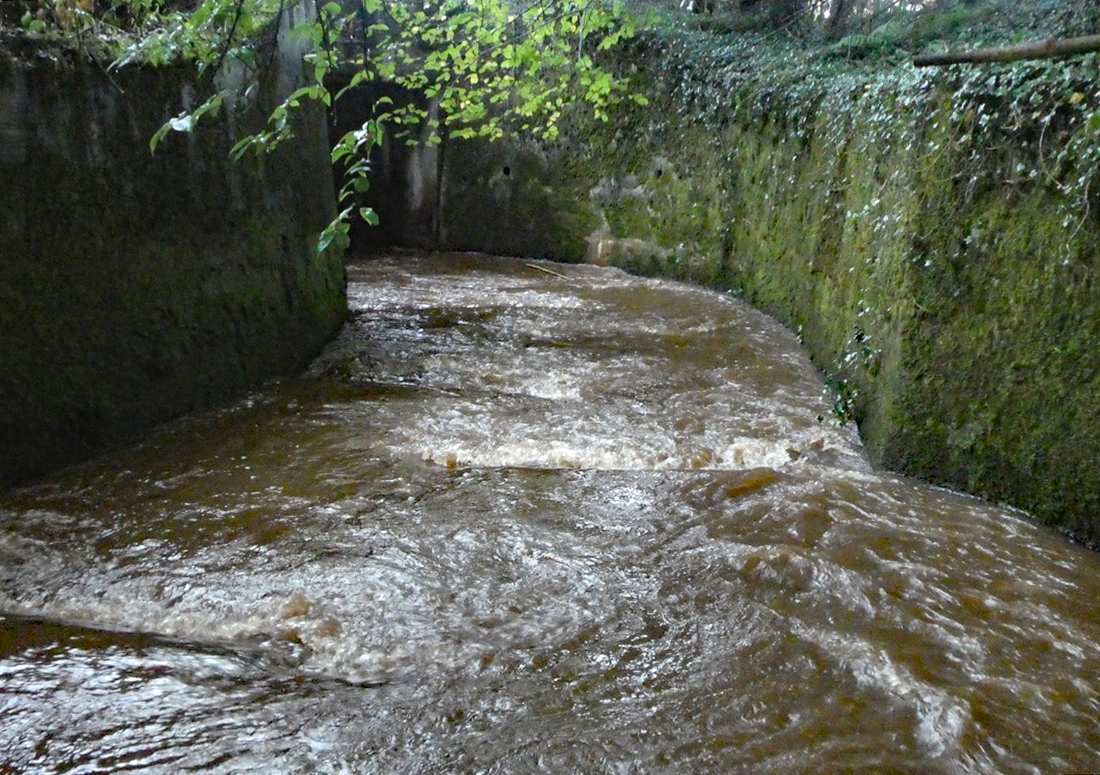
The view just upstream of the Newton Street road bridge this morning. The depth has increased and rate of flow reduced.
The water level was around 1/2″ up on any prior measured flow but none the less the results this morning were encouraging. It is around this flow level that we may expect trout and salmon to run into this burn later in the year.
At the upper culvert, the baffles have slowed the flow by approximately 63% from the mean average of 1.49 m / second to to 0.94 metres / second. Bear in mind this was assessed at a slightly higher flow than before the baffles were installed, so that’s a good result. Flow through the actual culvert alone reduced around 58% from 2.4m / second to 1.0m /second.
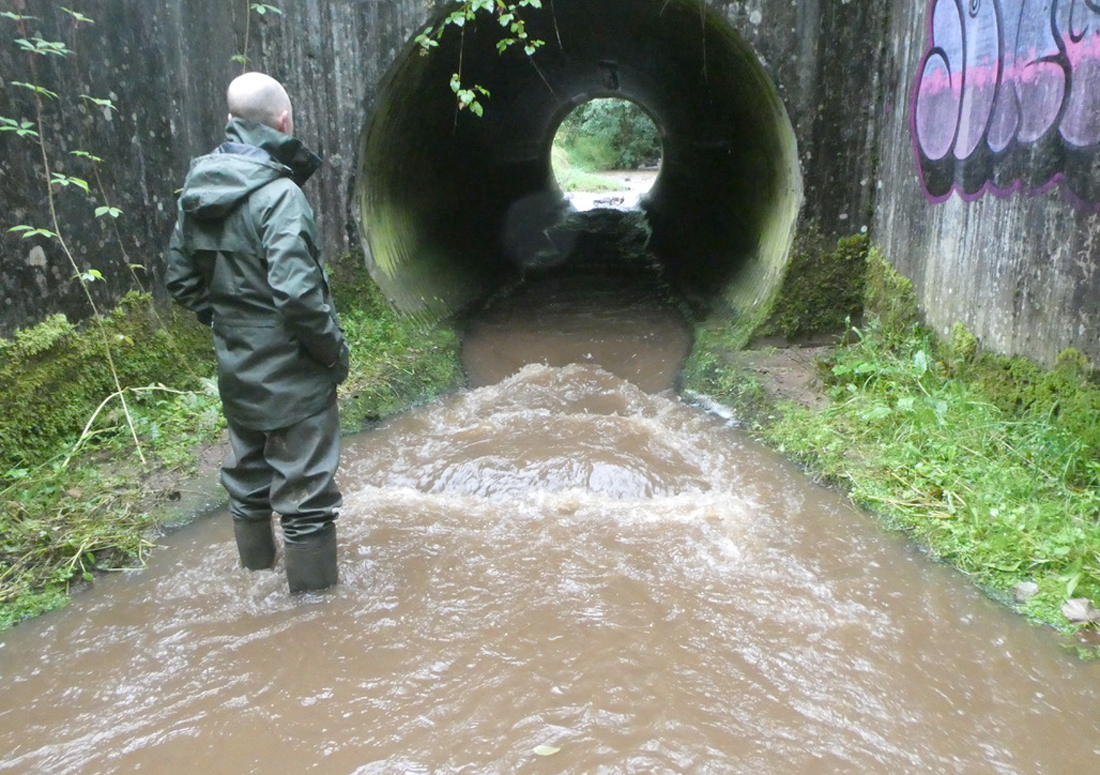
Apart from the sediment load, things were looking good at the upper culvert this morning. That’s a horrible colour of water but SEPA is working with landowners to improve water quality. The flow through the culverts was high but the rate of flow has reduced since the baffles were installed
The lower culvert also produced excellent results with the mean flow reducing from 1.6 m / second to 0.7m / second, a reduction of around 58% from top to bottom.
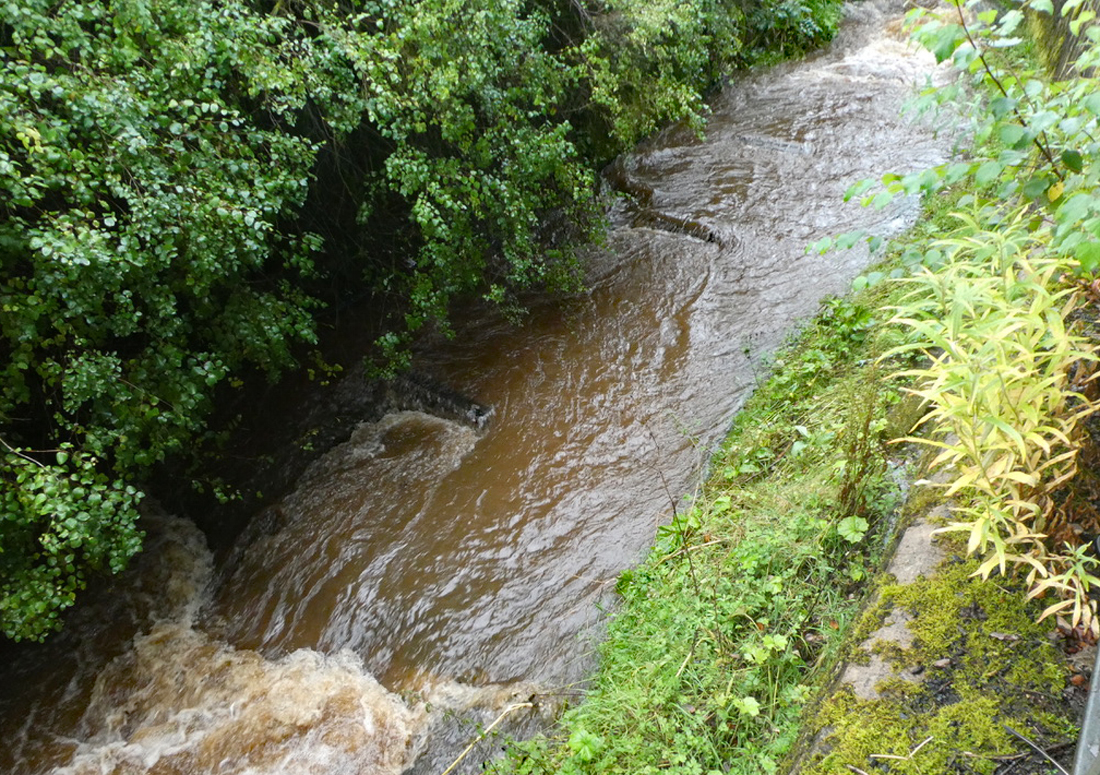
Alongside Holm Farm Road and this section has also slowed and deepened.
These are great results with the added benefit that increased depth within the fish pass sections means that trout and salmon should be able to migrate beyond both obstacles with relative ease in future.
We now need further water quality improvements to return this burn to a productive habitat for fish. ART and the Board will be working towards that goal and with SEPA at every opportunity to ensure this is achieved quickly.

